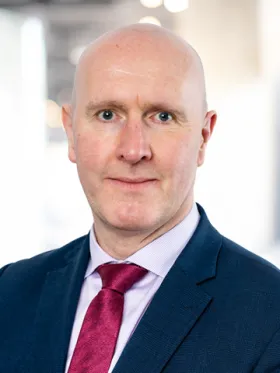It’s that time of year again when it seems to be annual conference season. I have the privilege of joining a panel at the Future of Utilities Summit Online where we’ll be exploring the role of technology in the propositions and services that utilities will offer to their customers.
Looking back to the future?
So, in preparation for a panel that will be looking forward to 2050, it seemed appropriate to think back to what the world was like in 1990 and consider how much has changed.
Given we will be talking about technology I’ll position 1990 as the year Tim Berners-Lee published his WorldWideWeb proposal with Robert Cailliau (okay, for the tech historians amongst you, I’ve ignored Berners-Lee’s original proposal from 1989, if only because that doesn’t fit as neatly within the 30 year horizon!)
Looking back over the last 30 years, what’s clear is the level of change that has been enabled by the use of the WorldWideWeb – it’s transformed and become intrinsic to the way we live our lives, from how we shop, to how we travel, to how we communicate with each other.
What it illustrates, at the risk of quoting Bill Gates, is that “We always overestimate the change that will occur in the next two years and underestimate the change that will occur in the next ten.”
It seems likely that this discussion will happen ahead of the release of the much-anticipated Energy White paper. But the Utilities sector has also proven Gates to be right. The 2003 Energy White paper set what seemed to be an aspirational target of 20% of the UK’s electricity to come from renewables by 2020. Yet today, in 2020, it’s close to twice that level!
So, what of 2050?
It seems unlikely that the fundamental physics of electricity, gas and heat will change. But, the dynamics of the energy systems are likely to have changed beyond recognition. Indeed, they are already in transition.
Just as we’ve seen the digital revolution in retailing, in banking, in transport and how that has changed customer expectation, I’m sure that we’ll see that come to energy as we shift to meeting our energy needs through more localised energy systems operating within wider, interconnected national systems.
And, data and digital technologies will undoubtedly play a key role (as highlighted in my Race to Net Zero recent blog) in making it simpler for consumers to access the benefits of a Net Zero (or even net negative) energy system that is more inclusive and shifts power to the consumer.
Things to keep in mind
I’m not sure, when looking out 30 years, that it is possible to establish a clear roadmap to achieve what today may seem like unattainable goals. On January 1st 1990 could we have predicted what the WorldWideWeb would enable?
I’d suggest that there are three things to keep in mind (which some of you may recognise from the top tips in our latest DSO For Dummies book):
- Avoid trying to predict the future based on the past - As I’ve already discussed, we’d almost certainly underestimate what will be achieved over a 30 year time frame.
- Build in some flexibility - To allow you to respond to, and take advantage of, emerging opportunities
- And get on with it!
- There will always be something better or cheaper just around the corner
- Doing nothing isn’t without risk – so it’s about having strong risk management processes in place
- That needs to include who you partner with and who is able to best manage what risks
- I’m sure that this will be as much about business models and supply chains as it is about technology and people.
What I am sure of is that we’ll see is a greater choice of services and of providers for Utilities’ customers that address each customers’ wants differently.
And this won’t come from one “silver-bullet” technology – we probably shouldn’t even try to guess what the technology landscape will look like in 2030, never mind 2050.
But, I’d like to believe that we’ll have underestimated the level of change we’ll see in three times ten years and will have achieved a net negative world where we, as consumers, are empowered to make the right choices and those right choices aren’t trade-offs, they are the economically sensible choices, too.
I suspect that the key technologies will be those that simplify the access to the benefits that the future of utilities offer. We should, therefore, look towards automation technologies and the use of appropriate learning technologies on the AI spectrum.
Get in touch to continue the conversation.





